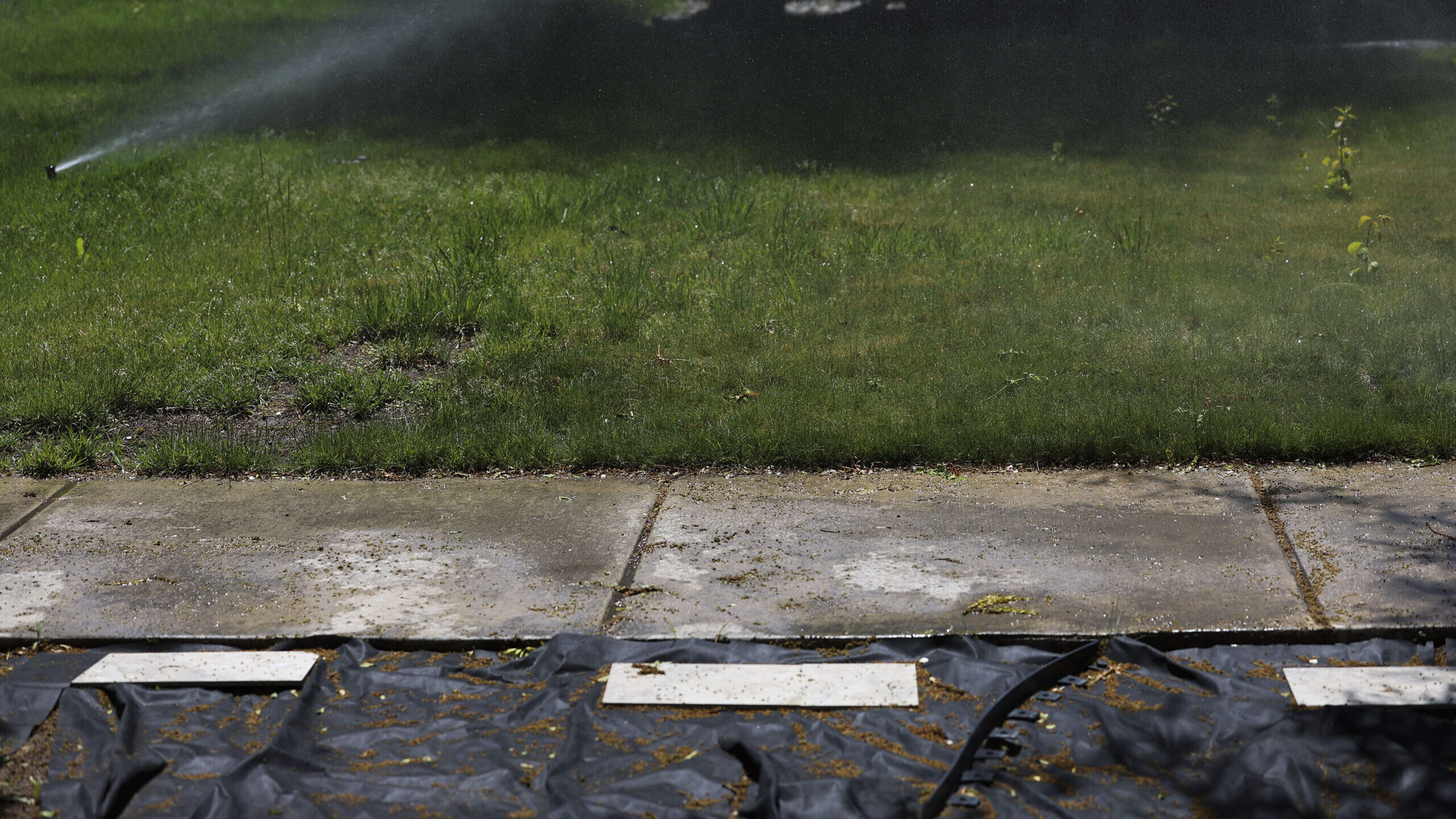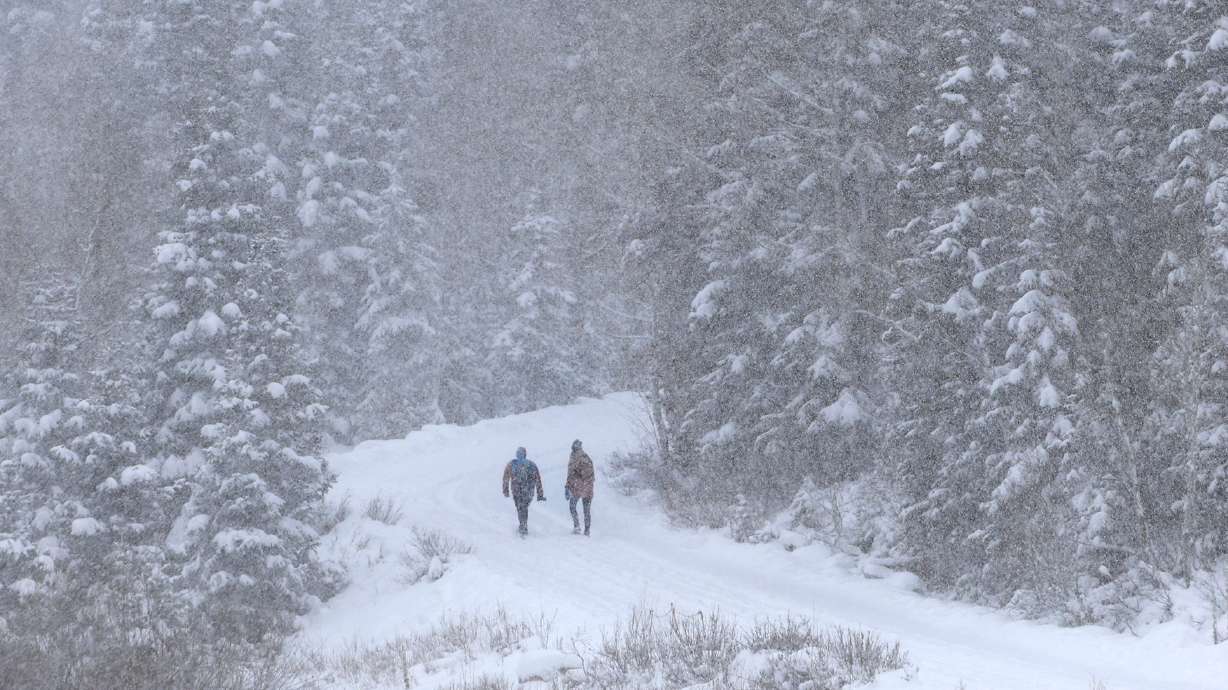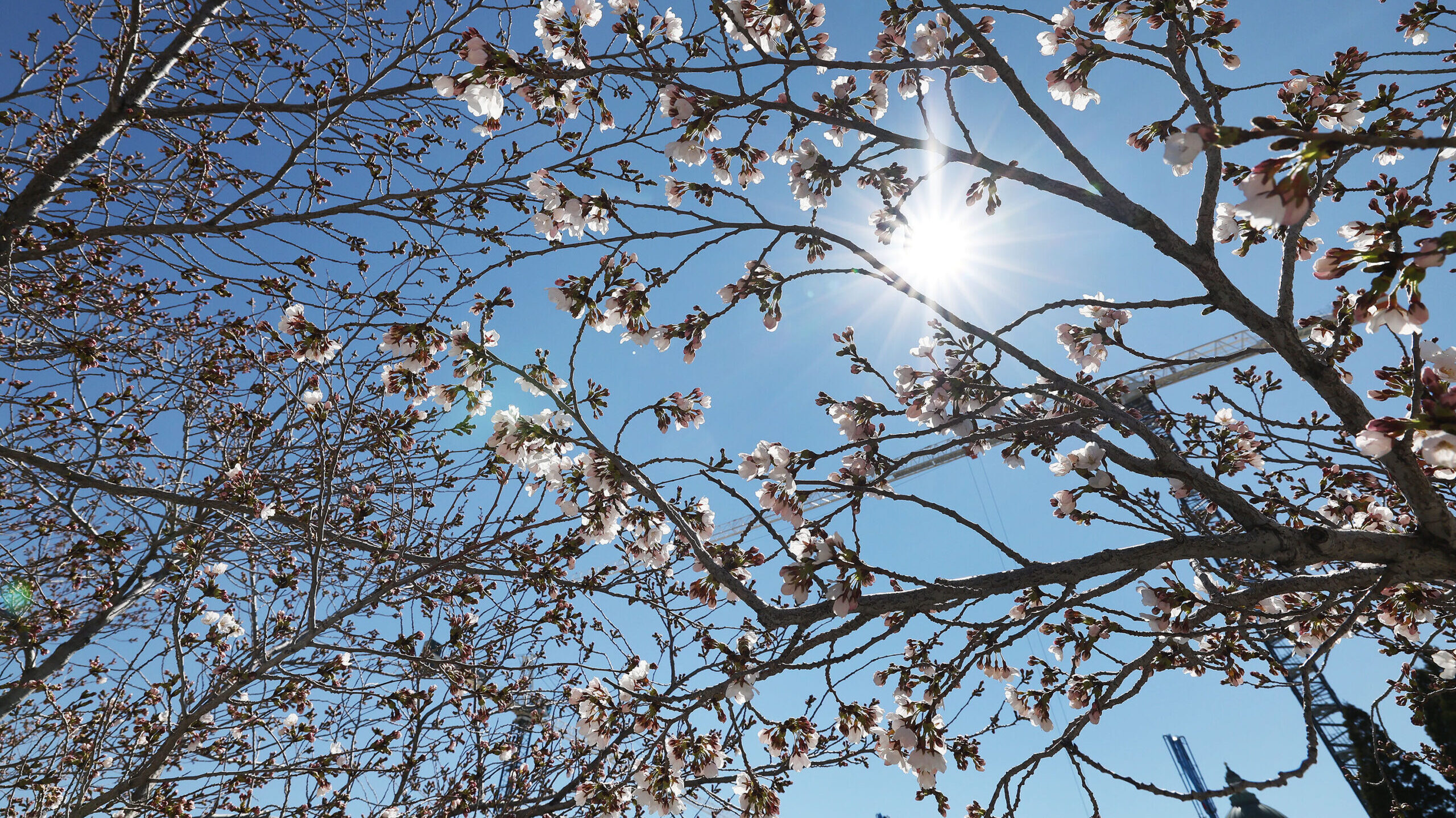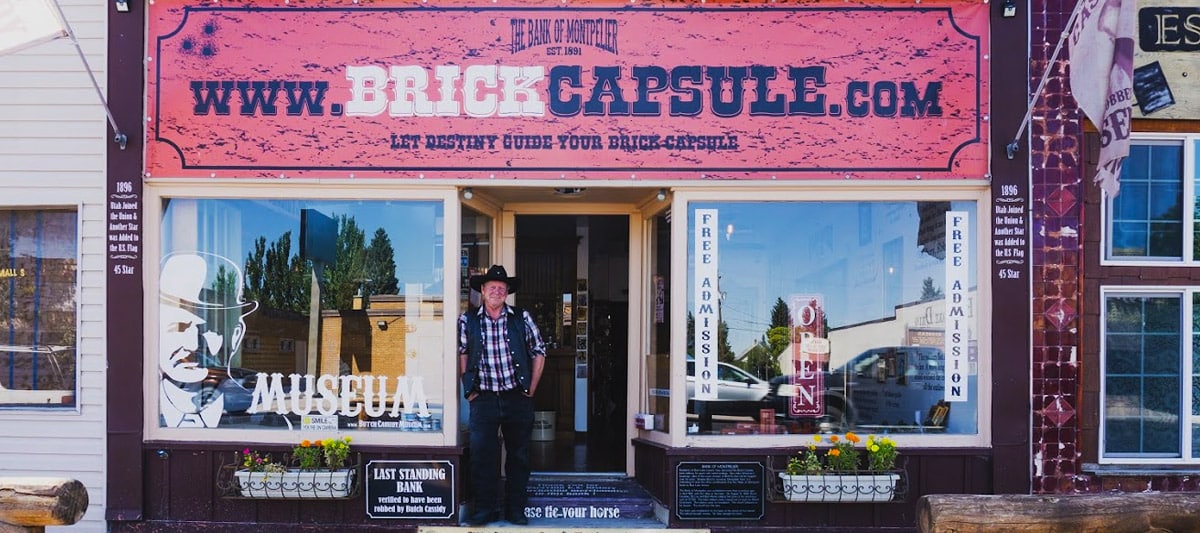Epic snow season limiting hunting permits in northern Utah
Apr 6, 2023, 6:30 PM | Updated: Jan 5, 2024, 2:47 pm
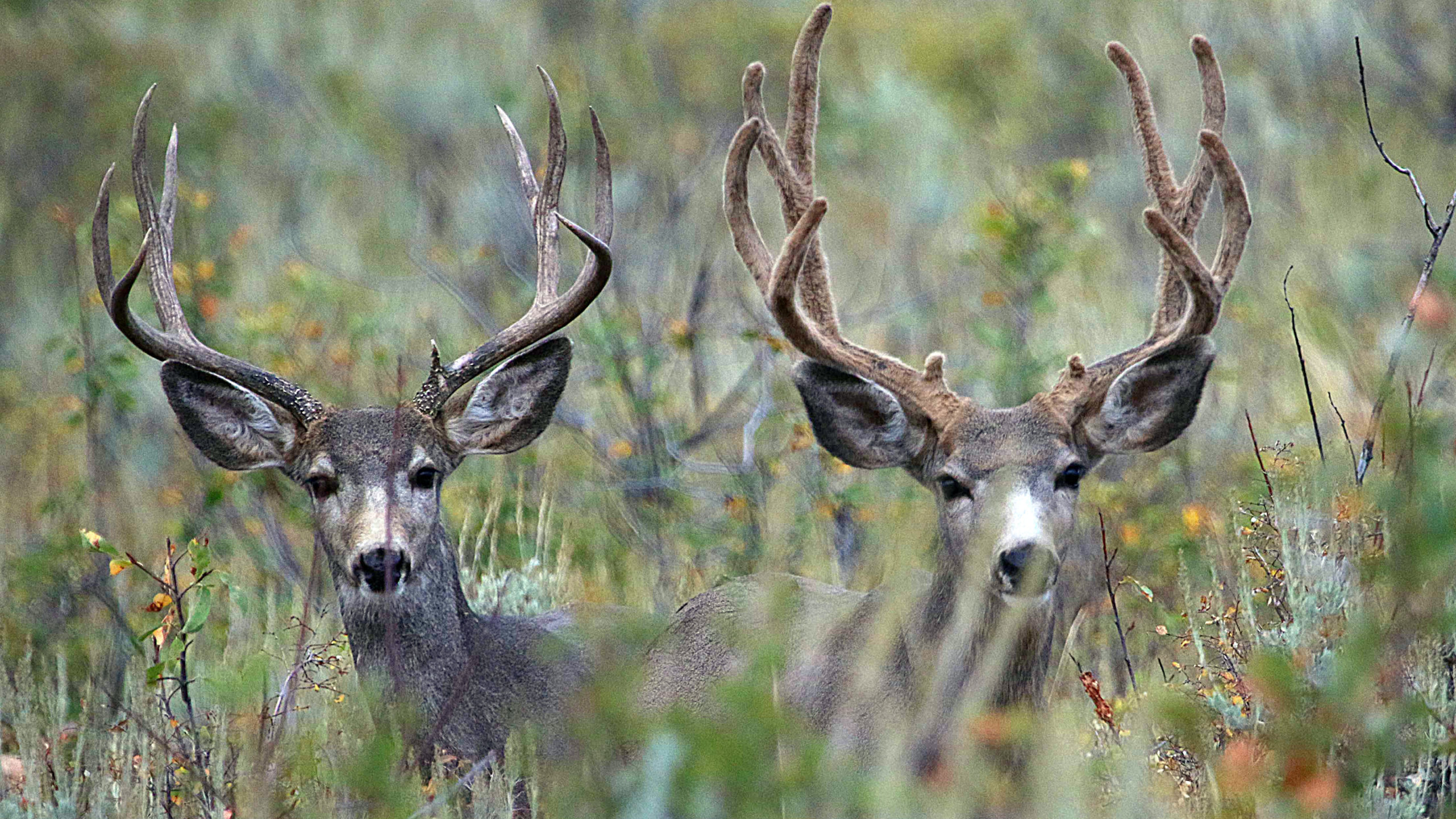
The Department of Wildlife Resources has implemented emergency state-wide restrictions for shed antler hunting to help protect Big Game in Utah. Two buck deer gaze in the direction of the camera. (Division of Wildlife Resources)
(Division of Wildlife Resources)
SALT LAKE CITY — The Division of Wildlife Resources wants to limit the number of hunting permits this year.
DWR Once-in-a-Lifetime Species Coordinator Rusty Robinson joins Dave & Dujanovic to discuss how many permits the division is planning to reduce and where.
For his job, Robinson said he oversees the hunting of species that can only be hunted once in a lifetime: bighorn sheep, mountain goats, moose and bison, but he said he also helps by managing deer and elk.
He said because of the abundant winter, deer are struggling in the northern part of the state yet in other areas, animals are faring well.
“The southern half of the state is actually doing really well. We’re seeing some of the highest survival rates we’ve ever seen,” Robinson said. “It’s kind of a mixed bag. Some of the Wasatch Back, Heber Valley and areas of Morgan and Cache have had a hard time, but central Utah and southern Utah are actually doing pretty good.”
Fewer hunting permits in the north
“How many permits are you looking to reduce?” Debbie asked.
Robinson said overall there will be a 2% decrease in hunting permits, but added the DWR is recommending a 20% reduction in buck permits in the Northern Region, an 11% decrease in the Northeast Region, which includes the southern slope of the Uinta Mountains.
“But actually pretty big increases in the Southern Region. And so overall, it’s a net, like 2% decline, over what we recommended last year,” he said.
Measuring a herd’s health
Dave asked how the DWR measures the health of a herd.
Robinson said that a GPS tracking collar is placed on deer in December and body-fat readings are taken.
“We get the animal in hand. We actually use ultrasound to measure their body fat, and so we can tell how healthy they are coming into winter,” he said.
According to Robinson, Utah is lucky to have had moisture last fall.
“So the deer came in really fat. . . . if it wasn’t for that, we’d see a lot more mortality losses,” Robinson said.
He said the collared deer are tracked. If they die, biologists hike in to determine the cause of death and if malnutrition played a part.
“We get an overall survival rate of adult deer and fawns,” he said. “That helps us have an idea how they’re going to carry over through the winter, what the population is going to look like as a whole for next hunting season.”
Hunters sound off on permits
“Rusty, what is the pushback been from hunters or those who want a permit? Have you heard any sort of negative feedback on this?”
He said his job is like being a referee: no matter what he does, he hears from one side or the other.
“The fact of the matter is, it’s getting harder and harder to draw a deer permit in Utah, and we definitely hear that sentiment,” Robinson said.
He added the number of permits to hunt bucks is a reflection of the overall health of the herd.
“When deer populations are doing great, we recommend more permits. When they’re not doing so hot, we recommend a reduction. And so we hear from both sides,” Robinson said.
Animals built to survive winter
“You brought up the once-in-a-lifetime hunts. Let’s talk about those. What have the reductions looked like for the bighorn sheep, the bull moose, the mountain goats?” Dave asked.
“We really don’t see a lot of winter loss on things like bison and moose, even elk,” Robinson said. “They’re just built differently. They’re built to withstand the winter.”
Related reading
- Little Cottonwood Canyon is one of most avalanche-prone canyons in the world, U of U professor says
- Deer populations rebounding in Utah, but state seeks fewer hunting permits in 2023
Dave & Dujanovic can be heard weekdays from 9 a.m. to noon. on KSL NewsRadio. Users can find the show on the KSL NewsRadio website and app, as well as Apple Podcasts and Google Play.



